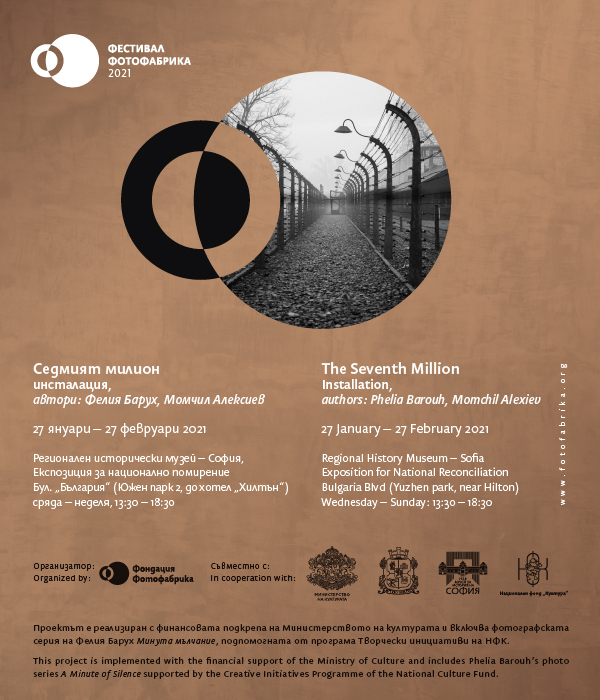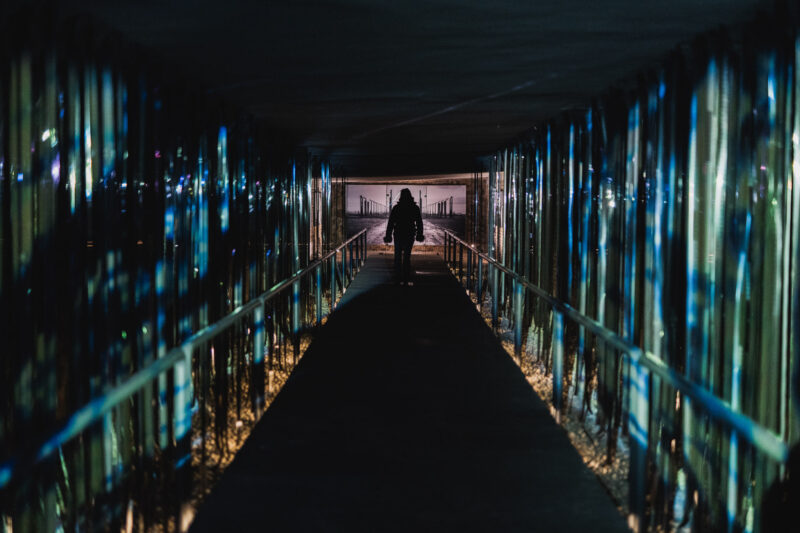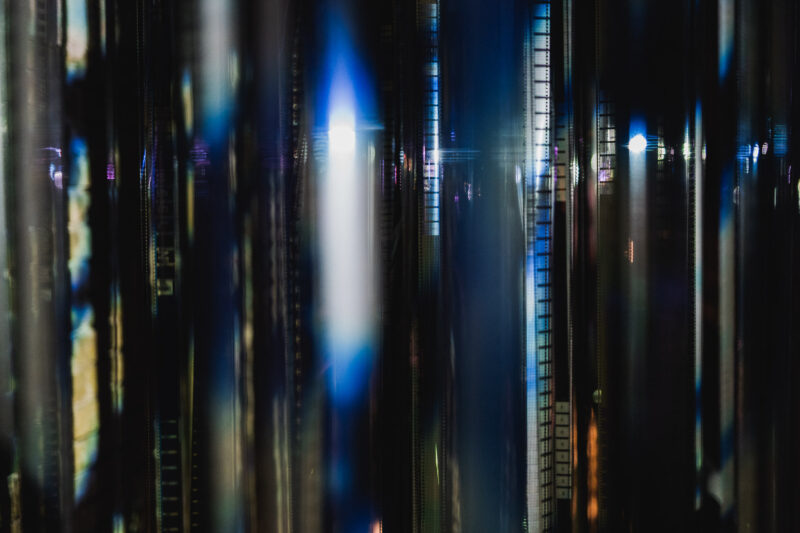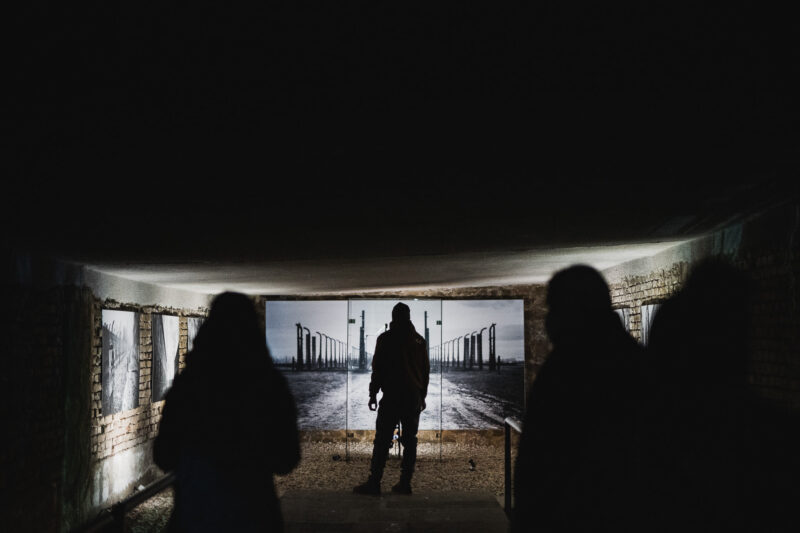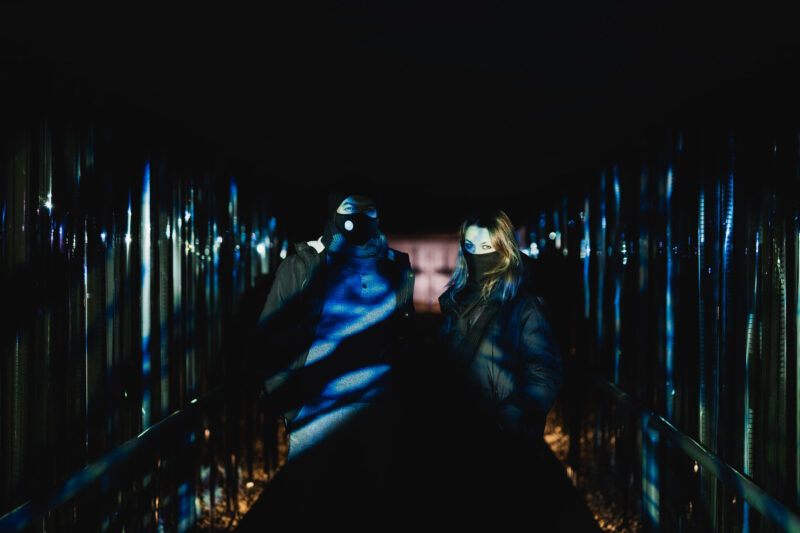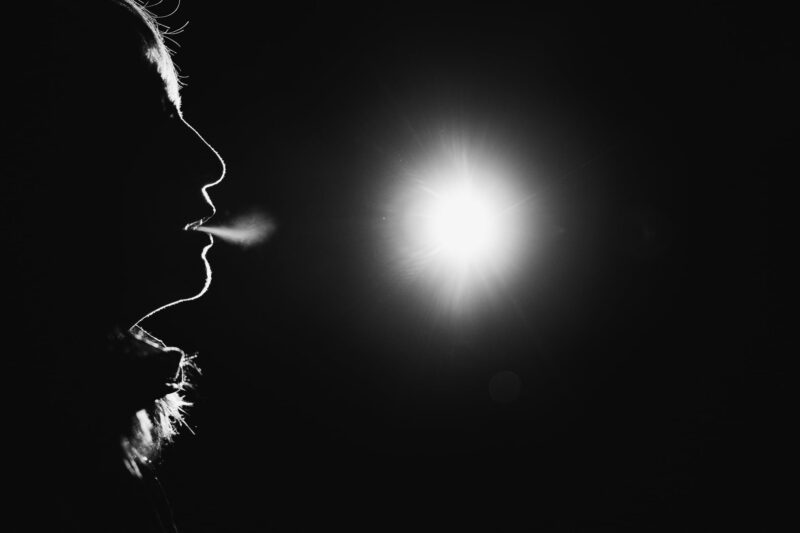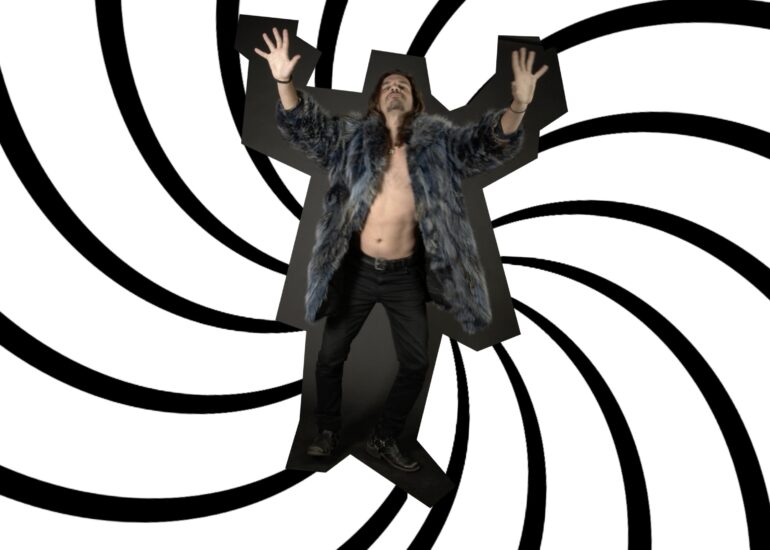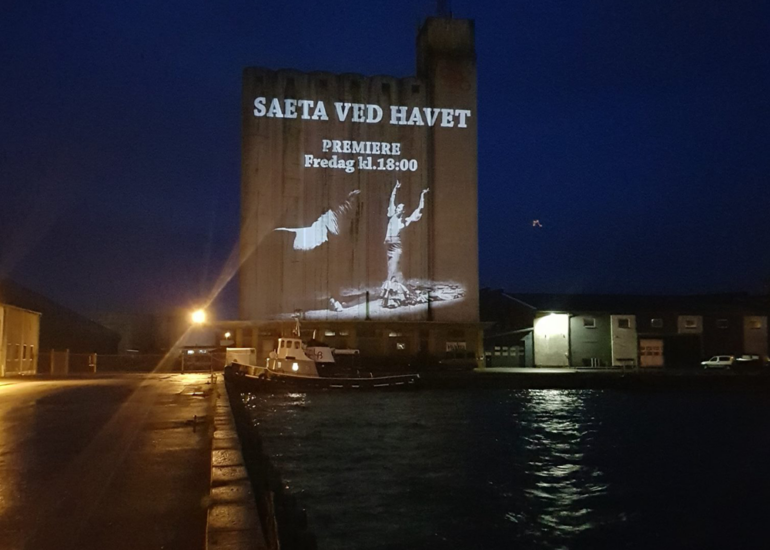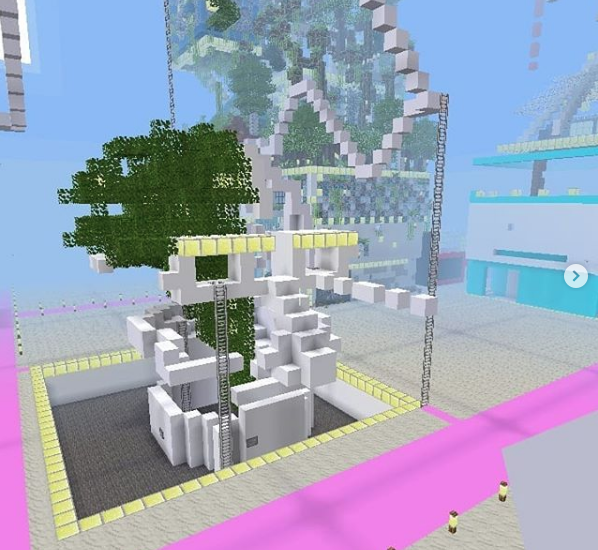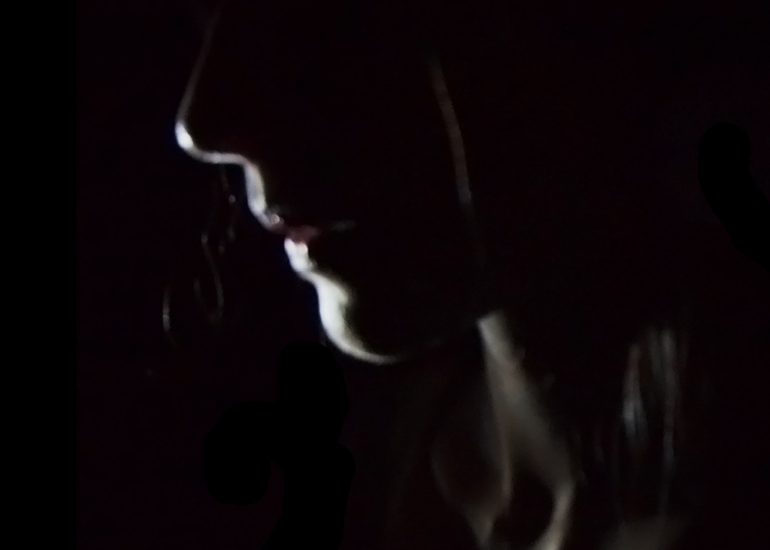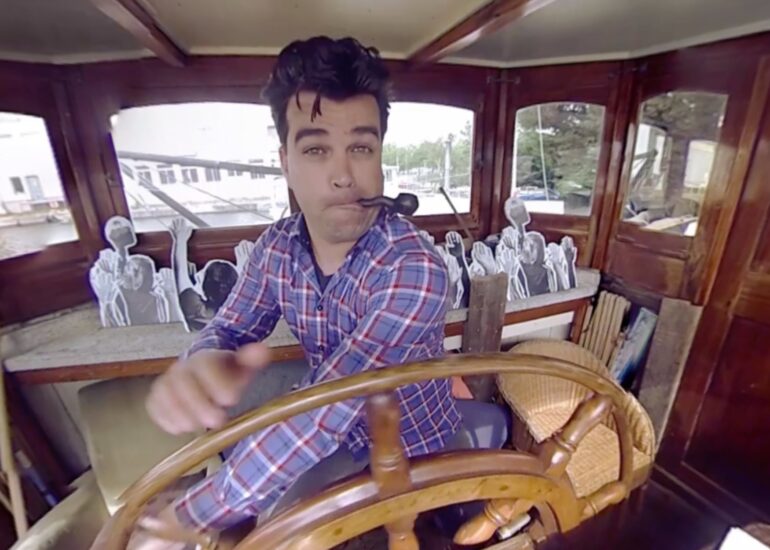The Seventh Million
The Seventh Million
Art installation / Fotofabrika Festival
Authors: Phelia Barouh, Momchil Alexiev
Photographer : Doriyan Todorov
2021 | FotoFabrika Festival | Exposition for National Reconciliation | Sofia | BG
The eighth edition of FotoFabrika Festival opened with the installation The Seventh Million, specially created for the space of the Exposition for National Reconciliation (part of The Museum of Sofia, former Garrison Shooting Range).
The Seventh Million is a project created by Phelia Barouh, which includes her photographs taken in 2020 at the Auschwitz-Birkenau death camp.
Audio, video, space design and scenography:
Momchil Alexiev and Phelia Barouh.
Logistics: Svetoslav Sharkov.
The Seventh Million installationwas opened on January 27, The International Holocaust Remembrance Day.
The Holocaust (from the Greek ὁλόκαυστον: ὁλόν, “completely”, and καυστον, “burned”) was the genocide of more than six million European Jews, planned and executed by Nazi Germany during World War II. In this period, western Poland was annexed to the Reich, the Soviet Union was attacked, and millions of Jews were deported to concentration camps, where many of them met their death in the gas chambers.
The Nazis called this act of genocide the “Final Solution of the Jewish Question”. In addition to Jews, Nazi Germany persecuted and murdered other groups, including the Roma, homosexuals, political and ideological opponents, and people with physical and mental disabilities.
According to some historians, the total number of victims of the Nazi regime exceeded 11 million. Although Holocaust denial has been criminalized in a number of European countries, there are groups of people, the so-called revisionists, who question the existence of mass executions in gas chambers as well as the number of Jews murdered by the Nazis.
What happened on the territory of Auschwitz and in the other death camps wasn’t the result of orchestrated hatred of some against others. It was the result of a highly organized, large-scale and well-equipped conveyor belt of death – designed to turn human bodies into ashes. This industry provided a living for hundreds of ordinary people. People who were otherwise innocent.
The memorials built in memory of the victims are not about making sure we remember that the victims have names and faces. That their suffering was not abstract; their deaths were concrete.
The memorials are about making sure we remember that everything that happened back then can happen today, too.
Back then: A civilized state built a perfectly operating industry of death with the participation of millions of ordinary executors.
Today: The world has become neither wiser nor more humane.
